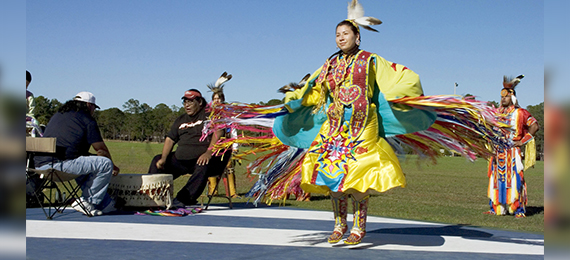
Native American Day is dedicated to the Native Americans. It is observed in various parts of the United States on the 4th Friday in September to celebrate the history, heritage, and culture of tribes across the United States. Every state celebrates, respects and appreciates the rich cultural heritage of the indigenous people in their respective US states. As of today, Native American Day is celebrated by many US states including Minnesota, New Mexico, Alaska, Louisiana, Maine, Oregon, Nevada and Vermont, and South Dakota. In Hawaii, it is observed as Discoverers’ Day. Want to know about the Native American holidays and traditions? If you want to honor Native Americans, let’s dive into the history of Native American Day and its origin through this blog.
History of Native American Day
Native American Day is a holiday celebrated mainly in several states. In 1968, Governor Ronald Reagon signed a declaration regarding American Indian Day to observe on the 4th Friday in September. The California Assembly passed AB 1953 in 1998 and declared Native American Day as an official state holiday. It was originally introduced by Dr. Arthur Caswell Parker, who was a Seneca Indian and a director of the Museum of Arts and Science in Rochester, New York. He, along with the Boy Scouts of America, decided to set a day for the “First Americans.” It started as a counter-celebration of Columbus Day, a US federal holiday celebrated on the same day to honor the Italian explorer Christopher Columbus. Several Americans didn’t like celebrating him, saying that he signifies “the violent history of colonization in the Western Hemisphere.”
Who Started Native American Day?
- A. Dr. Arthur C. Parker
- B. Dr.James C. Parker
- C. Dr.Robert C. Parker
- D. Dr. John C. Parker
What Is Indigenous Peoples Day?
Indigenous People Day is considered a holiday to celebrate the original inhabitants of North America. It is celebrated, replacing Columbus Day in some United States localities. Berkeley, California was the first city to replace Columbus Day with Indigenous Peoples’ Day in 1992.
The Timeline of the Native American Day
1916- In this year, American Indian Day was formally introduced in the United States when the New York Governor announced the second Saturday in May for the observance.
1919- The Illinois state legislature declared a law similar to New York’s.
1935- The Massachusetts governor circulated a proclamation to designate American Indian Day each year.
1976- President Ford selected a week in October to commemorate “Native American Awareness Week.” Since then, people have been observing a day, a week, or a month every year to honor Alaska Native and American Indian people.
1977-“Indigenous Peoples Day” first officially originated in Geneva, Switzerland. It was proclaimed by representatives of Native nations at the U.N.’s International Conference on Discrimination Against Indigenous Populations in the Americas.
1989- The South Dakota legislature designated 1990 as the “Year of Reconciliation” for Native Americans. It changed Columbus Day to Native American Day. South Dakota has nine native tribes.
1992-Berkeley, CA introduced 1992 as the “Year of Indigenous People” and stopped observing Columbus Day.
1994- The fourth Monday in September was designated as “American Indian Day” by the Tennessee state General Assembly.
1998-Ronald Reagan signed a declaration after around 30 years for “ American Indian Day” on the 4th Friday in September. The California Assembly announced Native American Day as an official state holiday.